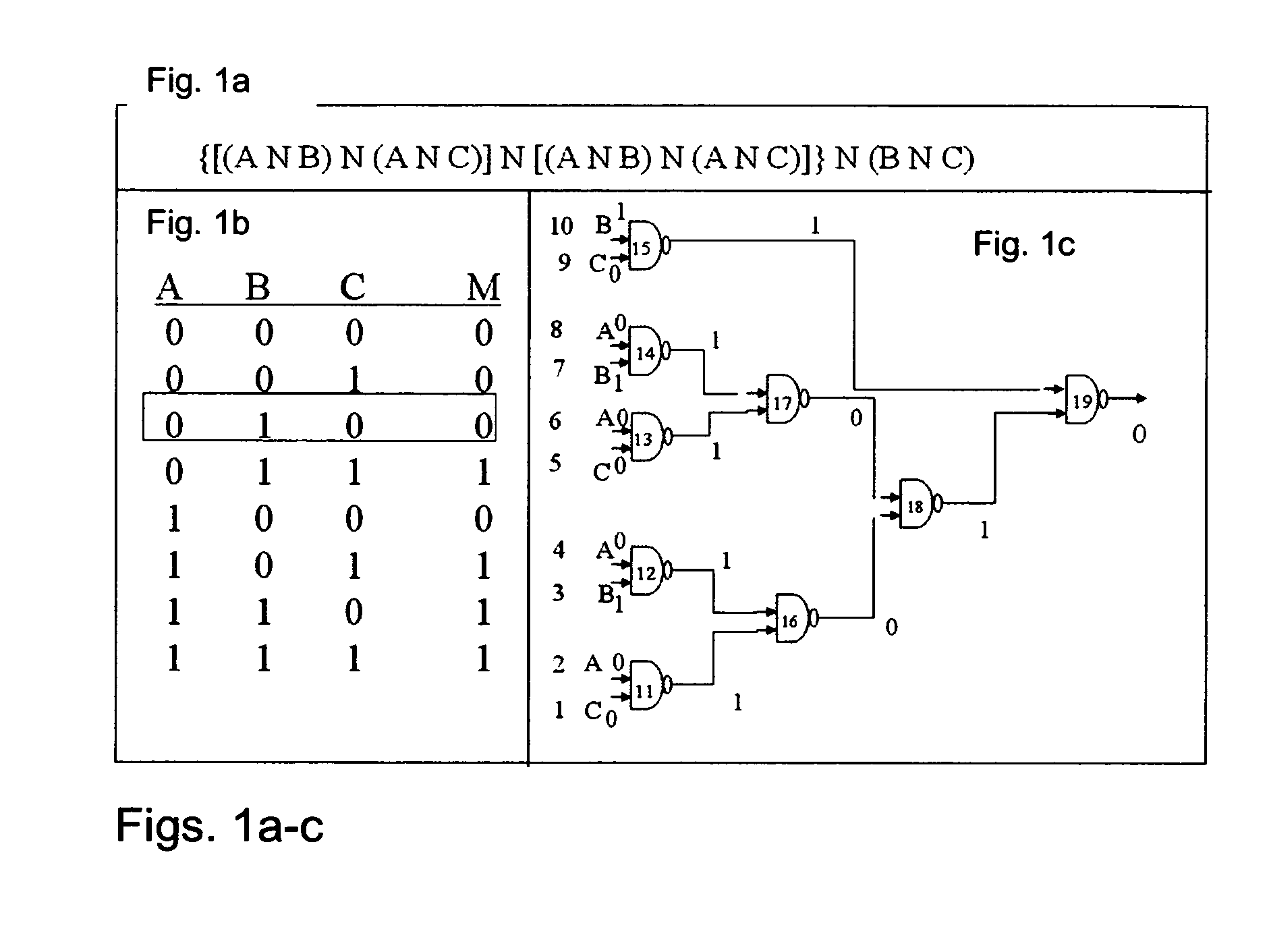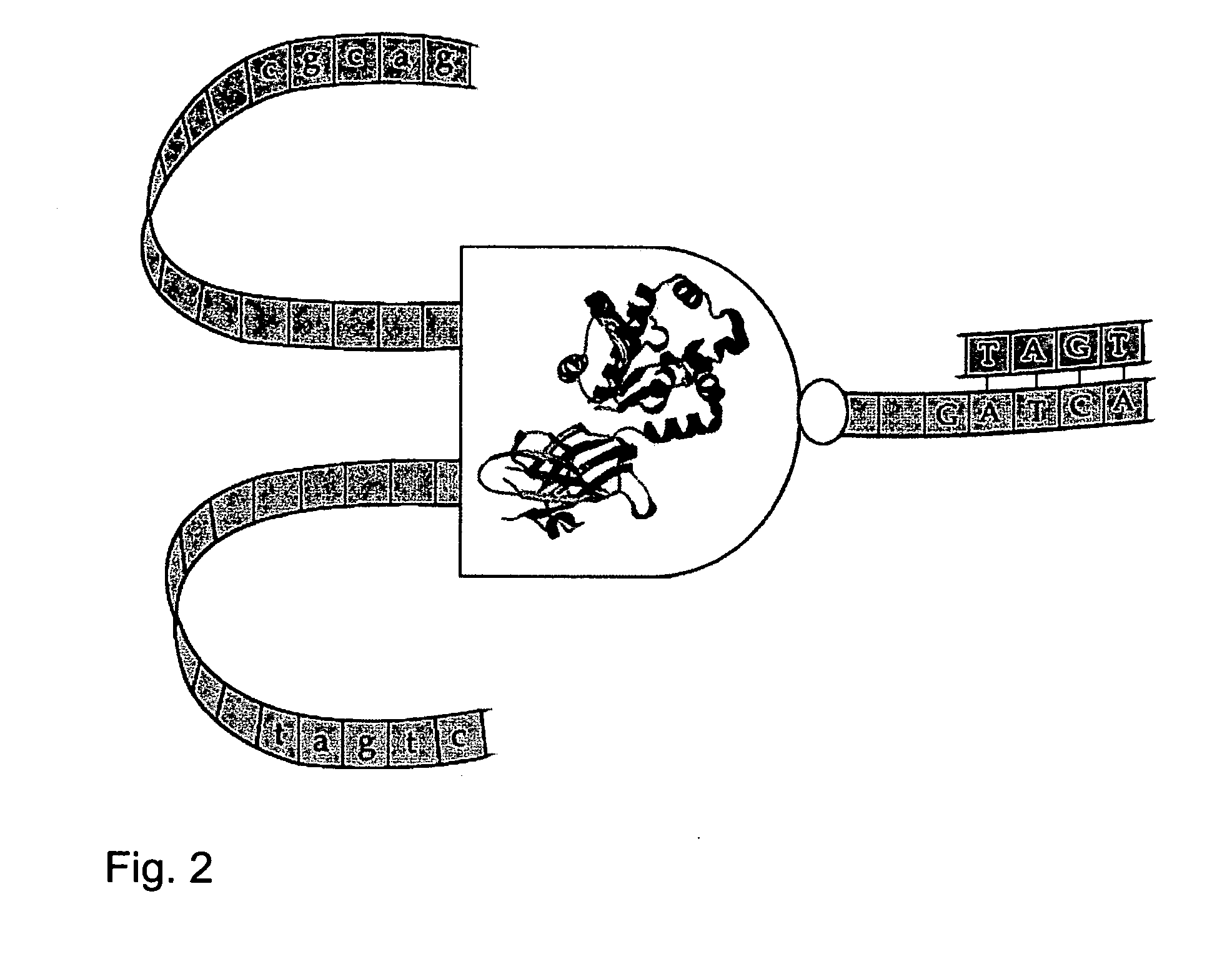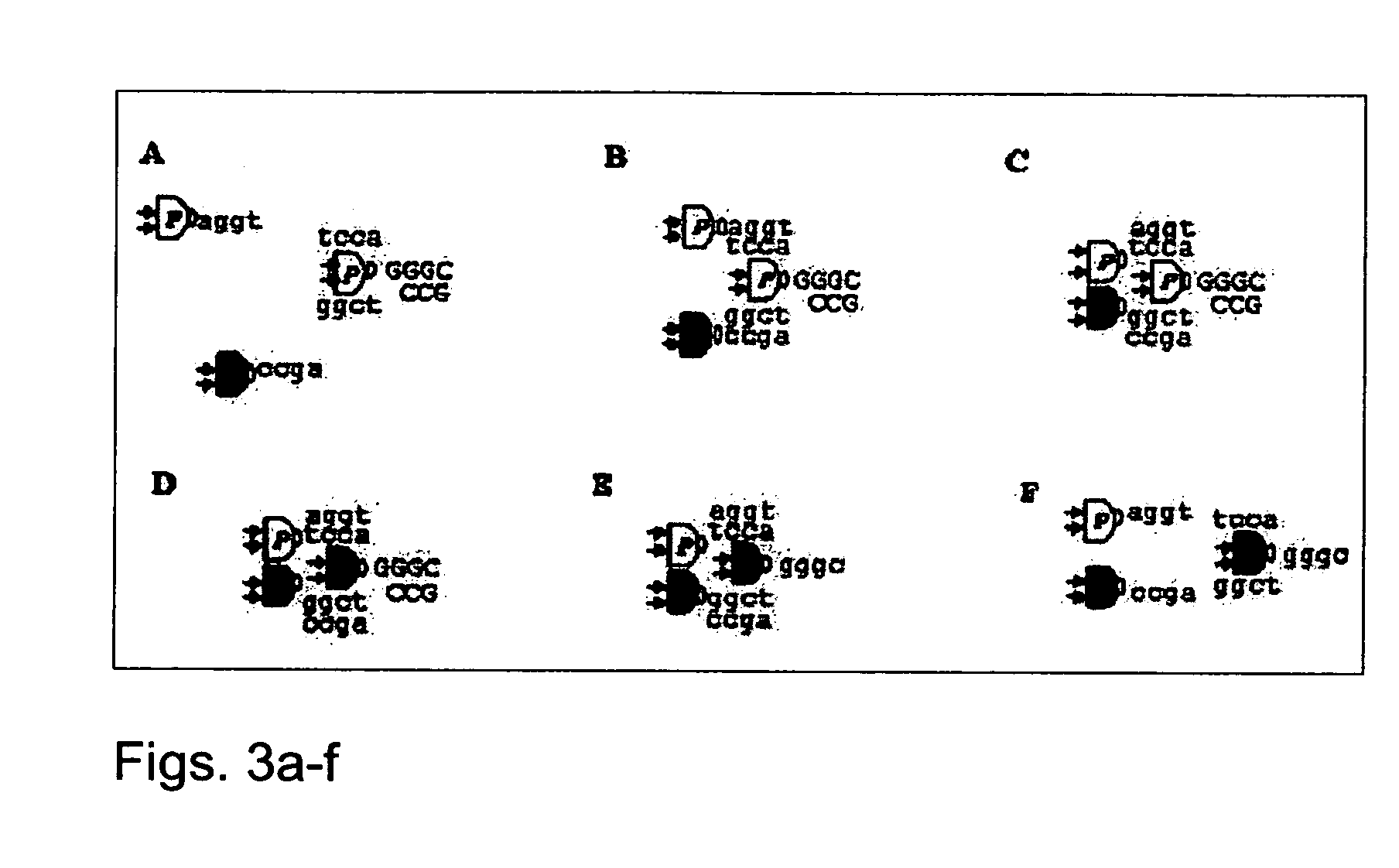Computing with biomolecules
a biomolecule and computing technology, applied in the field of molecular computing units, can solve the problems of slow computation speed, large complexity of biological components, and limited half-lives of most biological components, and achieve the effects of improving the efficiency of biological components
- Summary
- Abstract
- Description
- Claims
- Application Information
AI Technical Summary
Benefits of technology
Problems solved by technology
Method used
Image
Examples
example 1
The Molecular Computing Unit: Choice of Gates for the Computation Scheme
[0126] The following example schematically describes in abstract terms, the design of a bio-molecular system that is capable of carrying out a computation that follows the logic of a Boolean circuit based on NAND gates.
[0127] The choice of universal Boolean gates—Boolean algebra deals with calculating truth values (TRUE or FALSE) of logical statements and is the underlying mathematical tool of any digital circuit. Every Boolean function can be expressed using the two gates of AND and NOT (or OR and NOT). However, to keep the design simple and uniform, a single universal gate that can be combined to express any function was chosen. The NAND gate is one such gate (NOR is another possible gate). The NAND gate is an AND gate with the output INVERTED. The AND gate outputs “1” when ALL of the inputs are “1”, otherwise the output is “0”. The INVERTED gate (or the NOT gate) performs the inversion of the input. When th...
example 2
The Biological Implementation of the Molecular Computing Unit
[0139] The following example describes a detailed account of how the biological reactions chosen can be used to implement the scheme. The following reactions are certainly not the only possibilities for implementing a general design of a computational network, and some possible alternative mechanisms are also suggested. Regardless of the actual reactions that are ultimately used in engineering a practical implementation, the model proposed here is a general one, in the sense that the same design can be used to perform any logical calculation via biological computation.
[0140] The model proposed above is based on general ideas but must be implemented using specific biological processes and reactions. In this section, one set of reactions is suggested that could carry out the tasks required. The feasibility of these reactions is further described hereinbelow.
[0141] Formation of “wires” is based on recognition between DNA s...
example 3
The Majority Circuit
[0148] The following example provides a simple biological implementation of a circuit that calculates the majority function of its three inputs.
[0149]FIG. 1b provides the Truth Table and the logical design for this circuit. The output is “1” if at least two of its three inputs are “1”, otherwise it is “0”. While this is a very simple calculation that can be performed by many analog processes, the same approach can be used to implement any logical circuit, regardless of its complexity.
[0150] The circuit presented in FIGS. 1a-c has 19 elements. Elements 1 to 10 are inputs consisting of molecules similar to the rest of the computational elements, the only difference being that they have preset phosphorylation states, reflecting the required logical values. Gate 19 is the output gate. Thus, the system consists of 19 elements, each with the same protein component, capable of performing the phosphorylation and the exonuclease reactions, but each carrying different D...
PUM
| Property | Measurement | Unit |
|---|---|---|
| volume | aaaaa | aaaaa |
| catalytic functions | aaaaa | aaaaa |
| nucleic acid sequence | aaaaa | aaaaa |
Abstract
Description
Claims
Application Information
 Login to View More
Login to View More - R&D
- Intellectual Property
- Life Sciences
- Materials
- Tech Scout
- Unparalleled Data Quality
- Higher Quality Content
- 60% Fewer Hallucinations
Browse by: Latest US Patents, China's latest patents, Technical Efficacy Thesaurus, Application Domain, Technology Topic, Popular Technical Reports.
© 2025 PatSnap. All rights reserved.Legal|Privacy policy|Modern Slavery Act Transparency Statement|Sitemap|About US| Contact US: help@patsnap.com



